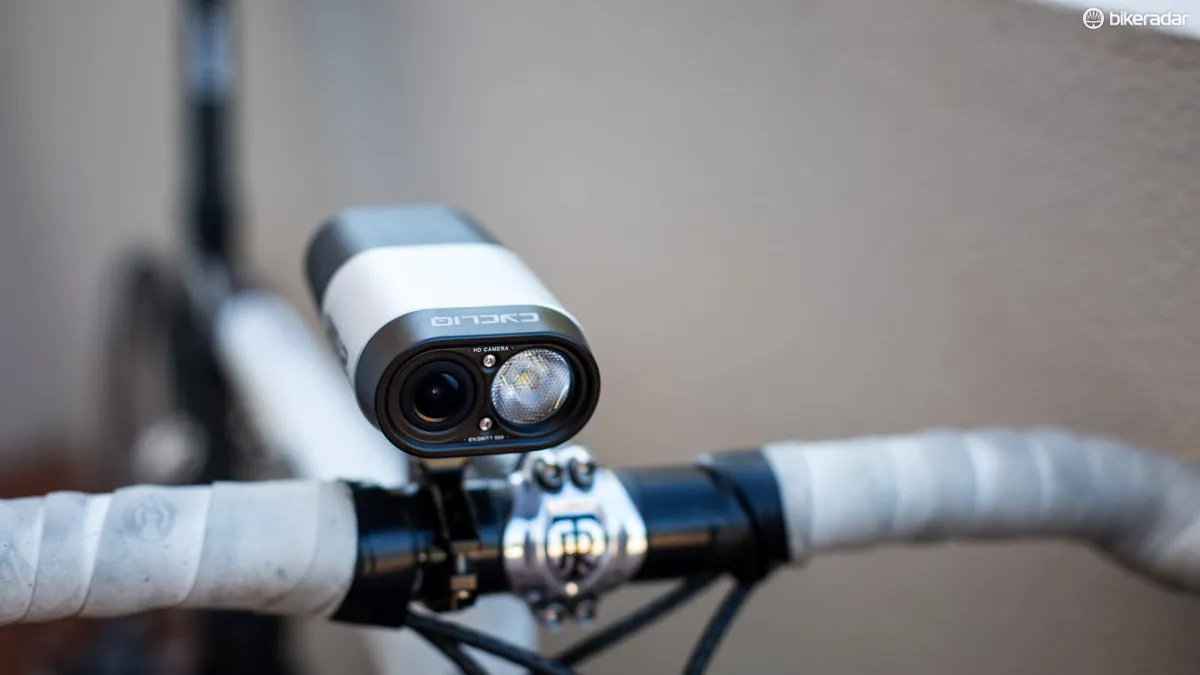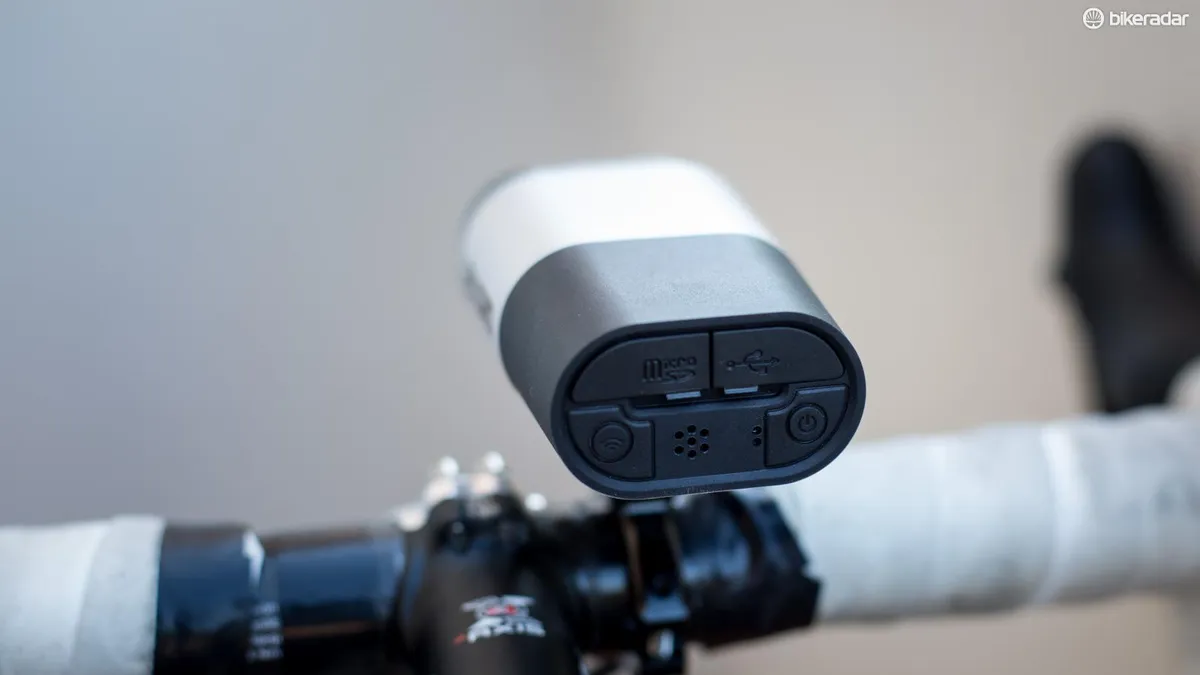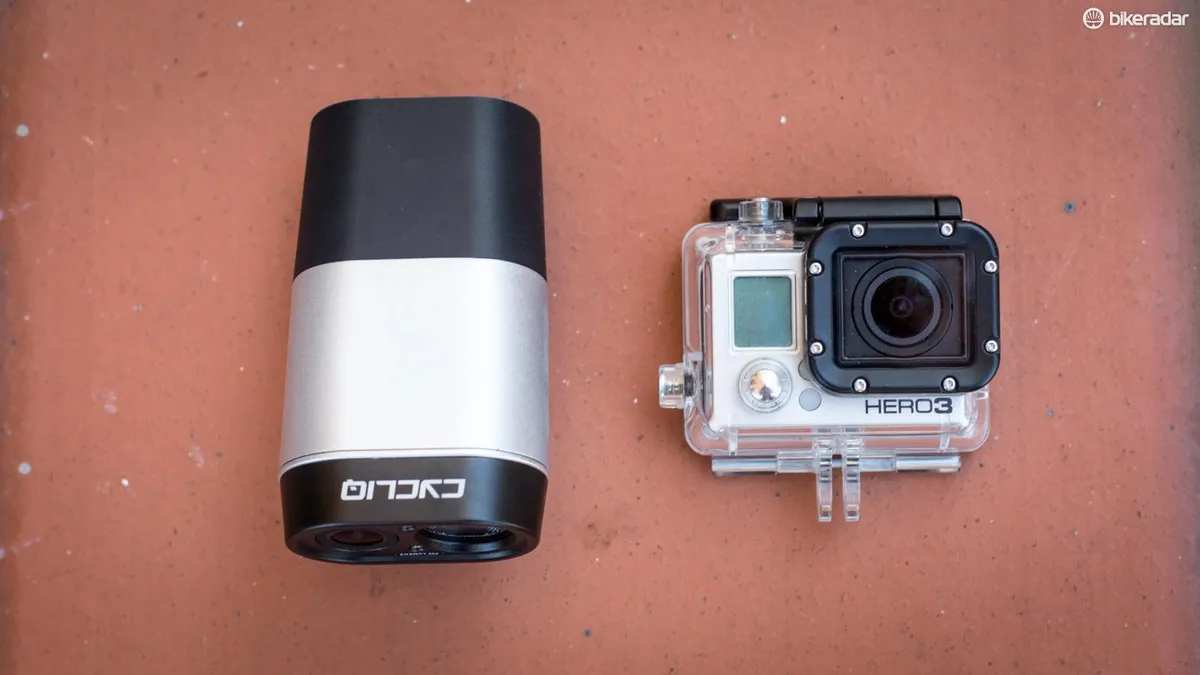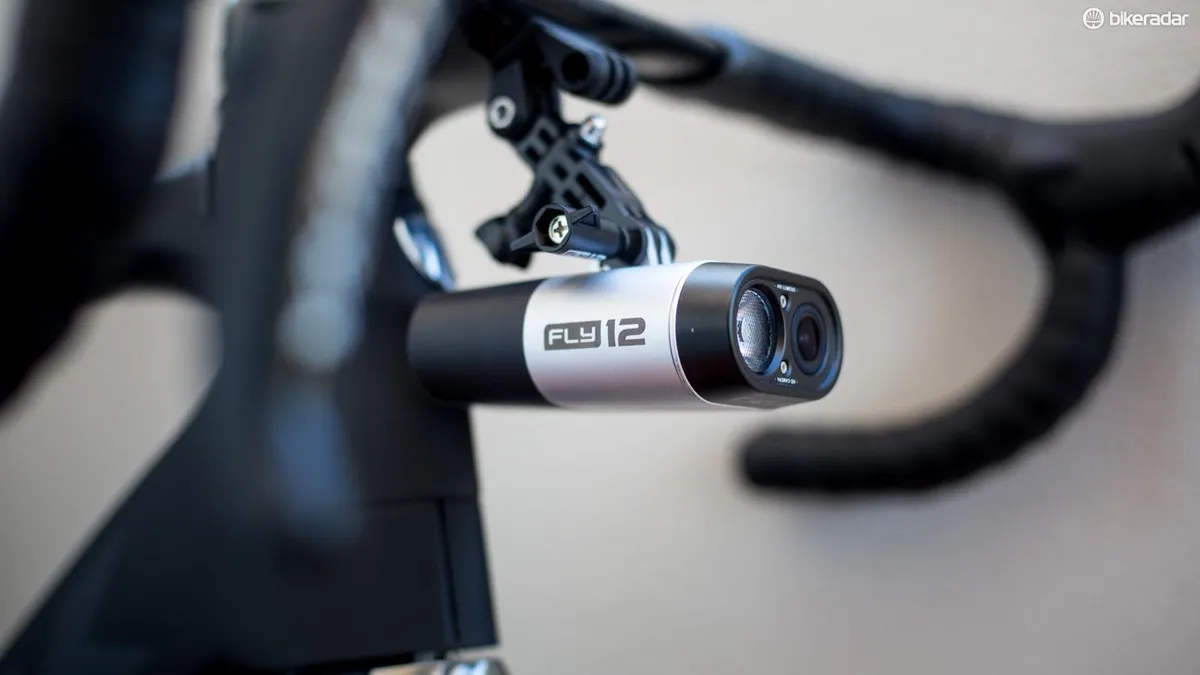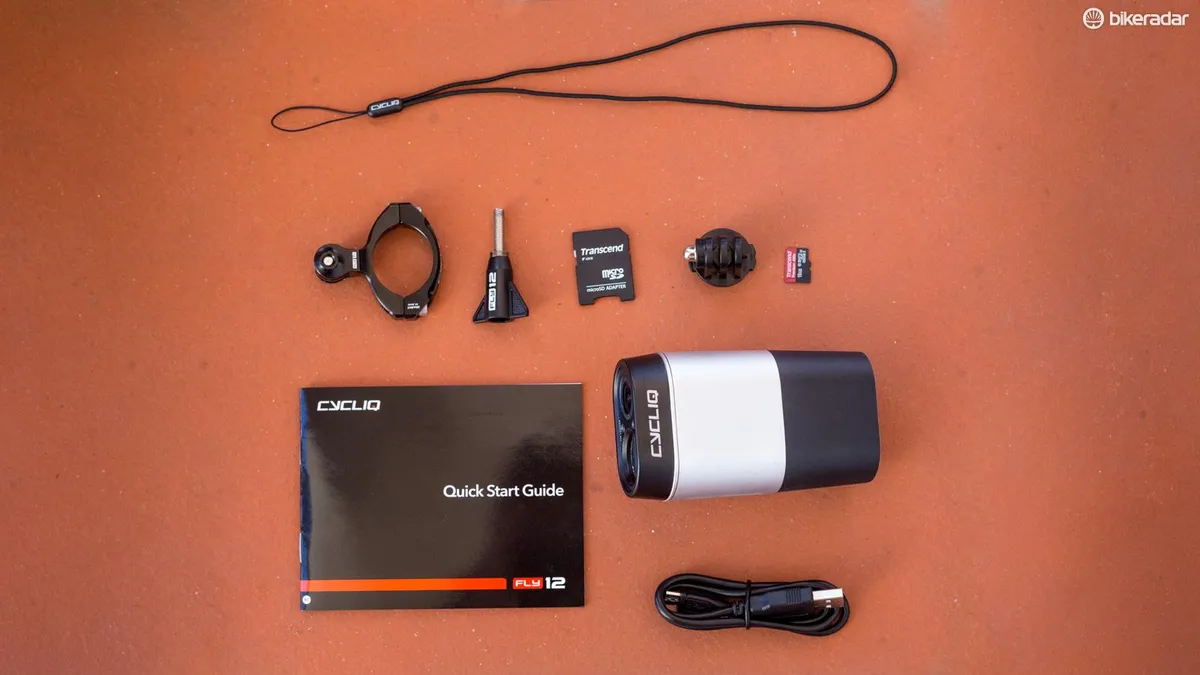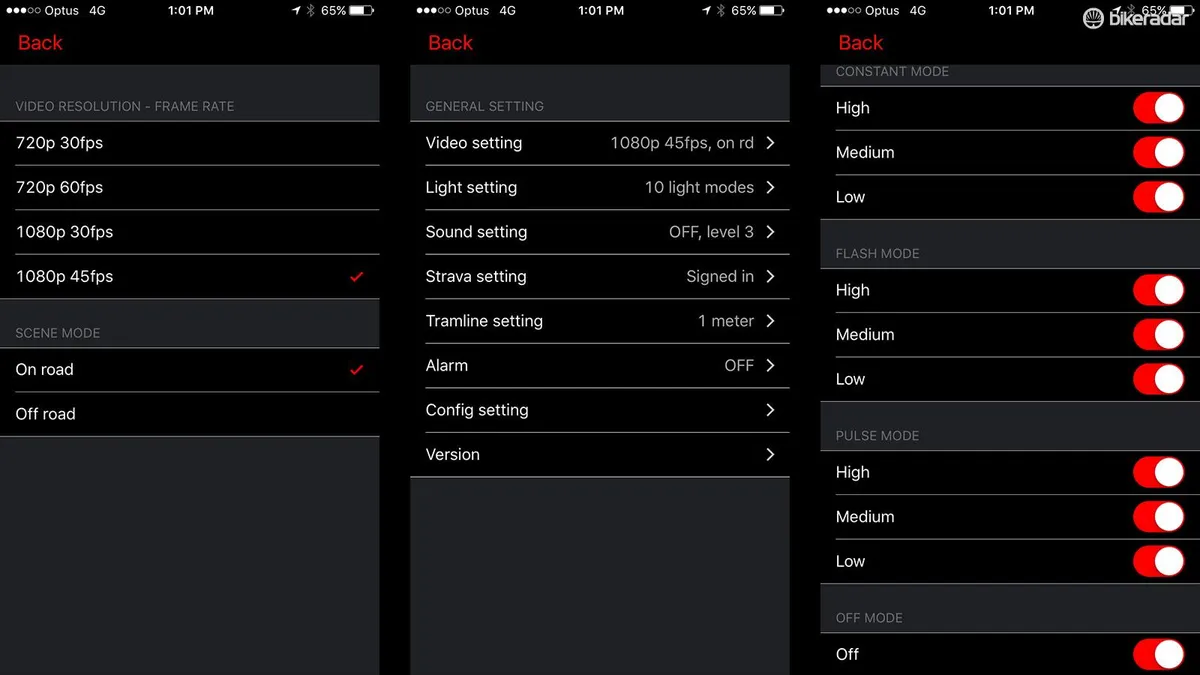After six-months of prototyping the Fly12 is now ready for market. BikeRadar was invited by Cycliq to participate in the prototyping phase, and during this period we saw what seemed like fortnightly firmware updates, issues addressed and fixed and two prototype units.
- Cycliq Fly12 blends front light & Full HD camera
- Cycliq Fly6 combination tail light and HD camera review
Following the groundbreaking success of the Fly6 combination rear camera and tail light, the Fly12 is Cycliq’s front-facing camera/light combo, bringing together a 400 lumen front light, a forward-facing HD camera, and Wi-Fi and Bluetooth connectivity.
The self contained unit also allows the ability to overlay metrics like speed, heart rate and power through Strava integration, and ‘tram lines’ to demonstrate how close that car actually came to hitting you as they passed. There’s also a bike alarm for peace of mind at the cafe.
While the Fly12 borrows a few features from its predecessor like looping video and incident capture mode, it also sees plenty of welcome upgrades, such as a glass lens and 1080p video.
On paper it sounds like the Fly12 is the ultimate all in one solution, but how does it fare in practice? We’ve spent some time with two versions of the prototype units and now the production version – read on to find out if the Fly 12 lives up to the hype
The features
The Fly12 sees an upgraded 2.8 fixed aperture, six-element glass lens, a welcome addition over the plastic lens seen on Fly6. With the camera’s ability to film high quality 1080p 45fps footage or 720p 60fps, the upgraded optics push the Fly12 beyond the realm of the safety camera.
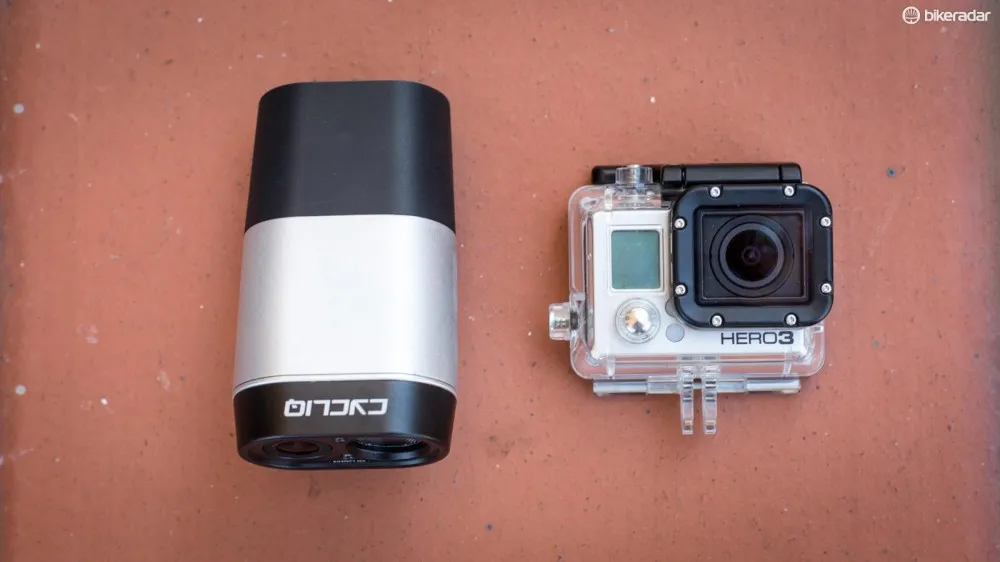
As we mentioned, there’s quite a lot going on inside the Fly12, which has resulted in a big and weighty unit tipping the scales at 243g and measuring 113mm x 31mm x 54mm. To put that into perspective, a GoPro Hero3 Black in the housing weighs 165g, a 400 lumen Knog Blinder Road 3 weighs 101g, and an über-bright 1,100 lumen Exposure Diablo weighs 113g. However for those wanting a light and video, they’ll need to run a combo of these devices leading to a heavier and more cluttered cockpit.
Though there are arguably superior mounting systems out there, the Fly12 uses 1/4in GoPro mounts, which are quickly becoming the industry standard. This means that you can not only utilize any of the included mounts, but also any of the GoPro, Sony Action Camera or Garmin Virb mounts you may already own.

A big selling point for Cycliq’s products is the units come with everything you need. There are no ‘hidden costs’ around purchasing the mounts, memory cards, cords or batteries required to operate the unit.
In the box, Cycliq provides a pretty standard Dual Bolt handlebar mount, and tripod mount. The Fly12 can be mounted either above and below the bars, and when mounted down below you hardly notice it's there. That said, on some bikes mounting below the bars will interfere with the cables, meaning it will need to go up top where it's very much in your face. When you combine this with even a small computer like a Garmin Edge 500, it makes for an extremely cluttered cockpit.
Like the Fly6, the Fly 12 chirps when you turn the unit on and off, using consecutive beeps to convey remaining battery life. In an effort to keep everyone on your street happy as you leave for your early ride or commute, the volume of these beeps can be controlled through the app.
Claimed battery life is up to two hours at the full 400 lumens with the camera running, six hours flashing with the camera running, and 10 hours in ‘studio mode’ (camera only). Though the prototype units seems to fall a tad short, the production unit falls inline with with claimed run time.
Also carried over from the Fly6 is the Fly12’s incident capture mode. If the unit is tipped past 30 degrees for five seconds it assumes you have been involved in an accident, and will run for an additional half hour before turning off to prevent the video looping to preserve the footage. While this feature provides indisputable evidence of the events that may transpire, be mindful that when you stop for a bathroom break and lay your bike down, the unit will perceive this as a crash.
Supporting the Fly12 is the Cycliq Plus app, which is only available on IOS at the moment and functions similarly to the GoPro app — an Android version is currently in development. You can connect your Fly12 to the app via Bluetooth or Wi-Fi, review and edit footage, arm the bike alarm and change light or video settings. Footage can only be uploaded via a Wi-Fi connection.
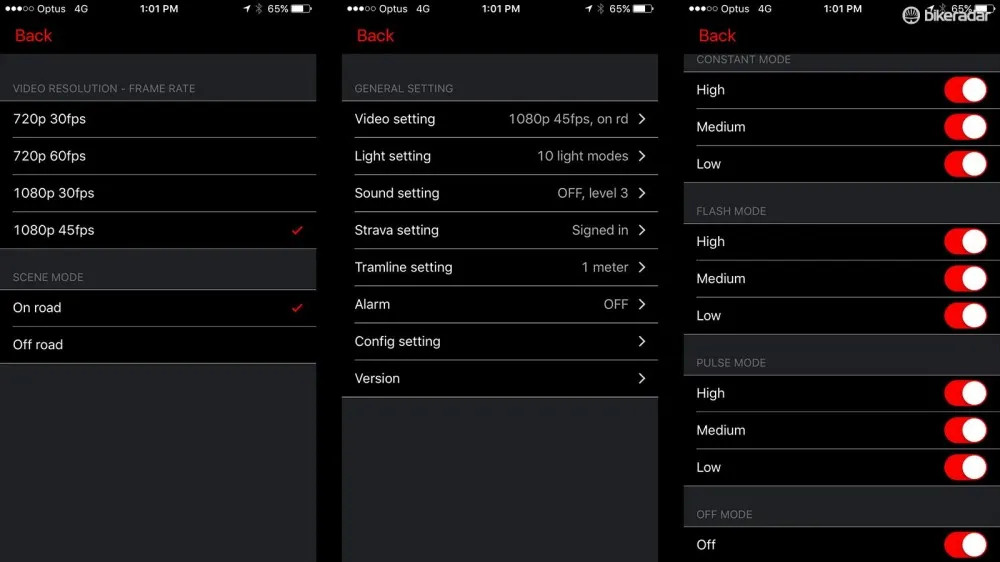
The app also allows overlays to be added to the video during the editing process. These include Strava metrics like maps, speed, power, and heart rate among others, as well as tram lines. After entering the width of your handlebars and the camera's height from the ground, the tramlines can be added in increments of 3ft, 1m, and 1.5m. This offers a visual reference point that shows how close things (cars, mainly) are to you. With legislations in some Australian states requiring cars to leave at least 1m passing room, this offers a legitimate form of evidence to catch offending drivers.
However it’s the Strava overlays that bring the Fly12 beyond the realm of the ‘safety camera’ – a similar overlay feature is currently only available with Garmin Virb cameras, and GoPros provided you’re using a Polar V800 watch. The Fly12 also comes with a three-month Strava Premium membership.
The Fly12 also receives HZ0 nanocoating, which makes the unit and all of it’s internals hydrophobic. Having used and abused the Fly12 everything short of dropping it into a bucket of water, we can confidently say that as long as you’re not regularly riding your bike into a swimming pool, you’ll be fine.
We can't forget the light – with 400 lumens on tap it's enough to get you to your dawn-patrol bunch ride or home safe on your nighttime commute. The beam shape has plenty of reach and we didn't feel like we were outrunning it at speed. With three flahing modes and three dimmer settings in each, there are plenty of options to tailor the light to your riding conditions.
The video
With Cycliq’s move to upgrade the Fly12’s optics and image quality, it appears the brand is trying to establish the unit as an action camera alternative. We’ve previously seen Knog, along with a few others, make action camera-specific lights that if we’re honest came up short.
With 400 lumens to play with, a beam shape designed for riding, and battery life that won’t leave you stuck in the dark, the Fly12 is better suited right off the bat as a standalone unit for all-condition filming.
It's worth pointing out that, like the previously tested Knog Qudos, the Fly12 is too heavy to be used helmet mounted as it adds extra strain to the neck and pulls your helmet uncomfortably out of alignment.
As far as image quality goes, when compared with a GoPro Hero3 Black both set to 1080p (Fly12 Films in 45fps at 1080p and the GoPro at 48fps) the GoPro footage is a touch sharper, the colours are a little richer, the dynamic range is a smidge wider and the video is slightly smoother – but only just. The GoPro is also solely designed for producing high quality video, and the Hero4 Silver is $100 more expensive in Australia.
Check out our video comparison with a GoPro Hero3 Black Edition
Cycliq Fly12 vs GoPro Hero3 Black Edition
The Fly12’s footage is broken up into five-minute (about 750MB for 1080p footage) clips and compressed into MP4 format. Once the included 16GB class 10 microSD card fills up, the the camera loops back (like a security camera) and records over the oldest footage on the card — though the Fly12 can support up to a 64gb card.
The verdict
The Fly12 is a tough one for us. It is a solid performer and achieves everything it has set out to do, and well at that. But despite its excellence, we really struggle to get past the weight and size of the unit.

Even the combo of a small light like the Knog Blinder Road 3 and Garmin Edge 500 pushes the limit of what we’d call a crowded cockpit. If you could chop the back half of the unit it would come closer to what we'd hoped for, and we think the size and weight of the unit for some may outweigh the densely populated list of features for some potential users.
While the Fly12 and the big-name action cameras share the the same mounting system, the Fly12 probably isn’t going to leave your handlebars. Yes you can film your line through a rock garden, or the action of a bunch sprint, but really its intended purpose is still to provide video evidence of incidents on the road.
With all of that said, Cycliq is trailblazing with its combo lights and cameras. Even though the Fly12 big, it's still smaller and lighter than mounting two separate units on your bars. While it's not cheap, it costs less than some comparable action cameras, and is cheaper still if you add in the cost of a 400 lumen front light. Considering its battery life and wireless connectivity, the Fly12 is miles ahead of many of its competitors.
